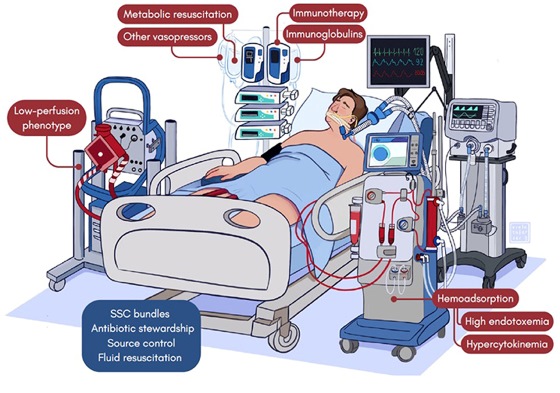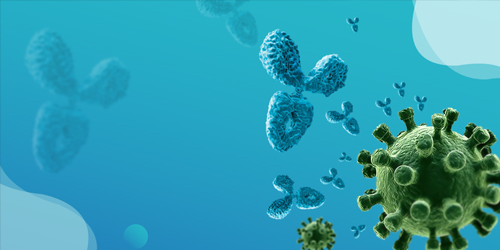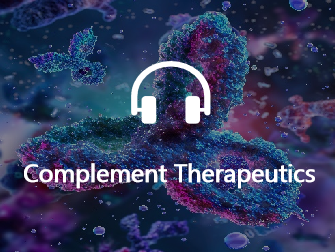Immunopathology Complement Activation Complement Molecular Mechanisms Related Products Hot Services Q&A Resources
Are you currently facing challenges in identifying effective targets for septic shock, grappling with the complexity of immune modulation, or struggling to develop highly specific and potent therapeutic agents? Our Complement-Targeted Septic Shock Solutions help you precisely intervene in the dysregulated immune response and develop novel, life-saving therapies through cutting-edge complement pathway analysis, advanced therapeutic antibody development, and sophisticated in vivo disease models.
Immunopathology Features
Septic shock, the gravest sepsis complication, maintains a high mortality rate despite advancements in antibiotics and intensive care. Sepsis is characterized by infection-linked systemic inflammation, defined by criteria such as altered temperature or leukocyte count, tachycardia, and rapid respiration. Septic shock occurs when sepsis-induced hypotension persists despite intravenous fluid resuscitation. Typically arising from localized infections, including those in the abdomen, lungs, urinary tract, or reproductive system, septic shock ensues when local inflammation escapes regulatory control by the immune and neuroendocrine systems. This unrestrained inflammation can escalate into systemic involvement, progressing to sepsis, severe sepsis, or septic shock.
-
The initial phase involves hyperinflammation, marked by a "cytokine storm" with a prominent release of pro-inflammatory mediators.
-
Complement system activation significantly contributes to tissue damage and inflammation through the generation of anaphylatoxins and the membrane attack complex.
-
The inflammatory state often triggers the coagulation cascade, leading to microvascular thrombosis and widespread organ injury.
-
Subsequent to hyperinflammation, many patients enter a state of immunosuppression, known as Compensatory Anti-inflammatory Response Syndrome (CARS).
-
This immunosuppressive phase is characterized by increased anti-inflammatory cytokines (e.g., IL-10) and immune cell dysfunction, including lymphocyte apoptosis and monocyte deactivation.
-
Neutrophils exhibit dysregulation, and T cells can show signs of exhaustion, impairing effective pathogen clearance.
 Fig.1 Identifiable and modifiable characteristics in patients with sepsis.1
Fig.1 Identifiable and modifiable characteristics in patients with sepsis.1
Therapeutic Strategies for Septic Shock
The current clinical management for septic shock typically involves the following aspects: early identification and treatment of causative infection, adequate and rapid hemodynamic resuscitation, treatment of organ failure, corticosteroids, and regulation of the immune response. Certain strategies now directly target key proteins of the complement cascade such as anti-C5a agents or C5aR -blockers, administration of C1-INH for blocking complement activation, or indirectly strategies affect complement system like anti-TNF treatment. Direct or indirect inhibition of complement both could provide new approaches for the treatment of septic shock. Given the invaluable role of C3 in the development of septic shock, it may have the potential to be another specific and effective targeting strategies.
Related Complement Activation Pathway
The complement system is a critical component of the innate immune response, and its dysregulation plays a significant role in the pathogenesis of septic shock. All three pathways of complement activation can be involved, contributing to the uncontrolled inflammation and tissue damage characteristic of the condition.
Table 1 Complement activation pathways.
|
Complement Activation Pathways
|
Septic shock Pathogenesis
|
|
Classical Pathway
|
In septic shock, bacterial components, toxins, and cellular debris activate the classical pathway, initiating a cascade where proteins like C-reactive protein (CRP) bind to surfaces, triggering C1q and resulting in the formation of C3 convertase, C5 convertase, and finally the MAC. Excessive production of C3a and C5a leads to systemic inflammation, vasodilation, increased vascular permeability, and endothelial dysfunction, driving hypotension and organ failure.
|
|
Alternative Pathway
|
In sepsis, microbial surfaces such as bacterial cell walls and fungal components, along with host molecules from damaged tissues, can initiate vigorous alternative pathway activation, with the process enhancing C3 activation on these surfaces. This results in the formation of the alternative pathway C3 convertase (C3bBb), which efficiently produces substantial amounts of C3a and C3b, serving as an amplification loop for the classical and lectin pathways, and significantly adding to the inflammatory burden and tissue injury characteristic of septic shock.
|
|
Lectin Pathway
|
In sepsis, mannose-binding lectin (MBL) and ficolins bind a wide array of pathogens, including bacteria, fungi, and viruses, as well as altered host structures exposed during cellular stress or death, resulting in MASP-2 activation which cleaves C4 and C2 akin to the classical pathway. This forms the C3 convertase and generates C3a and C5a, exacerbating systemic inflammation and organ damage, while genetic variations affecting MBL levels or activity are linked to sepsis susceptibility and outcomes, underscoring its role in disease pathogenesis.
|
Molecular Mechanisms of Complement-Mediated
Table 2 Molecular mechanisms of complement-mediated.
|
Key Complement Components
|
Functions
|
|
C1q, C1r, C1s
|
Binds to bacterial components, antibodies, or CRP; initiates classical pathway.
|
|
MBL, Ficolins, MASPs
|
Binds to pathogen carbohydrates; initiates lectin pathway.
|
|
C3a
|
Potent pro-inflammatory mediator; induces vasodilation, increases vascular permeability, activates immune cells.
|
|
C5a
|
Most potent inflammatory mediator; strong chemoattractant for immune cells, drives cytokine release, directly impacts endothelial cells.
|
|
MAC
|
Forms pores in cell membranes, leading to cell lysis (pathogens, host cells) and sublytic cell activation.
|
With abundant drug development experience over the past years, creative Biolabs is confident to guide our customs to exploit the new complement therapeutic drugs for septic shock. If you are interested in our service, please feel free to contact us for detailed information.
Related Hot Products
Our comprehensive complement platform offers a broad and cost-effective selection of complement-related products. We welcome you to contact us.
Table 3 Featured products.
Related Hot Services
Table 4 Complement test services for SS-related complement studies.
Resources
Reference
-
Chiscano-Camón, Luis, et al. "Current perspectives in the management of sepsis and septic shock." Frontiers in Medicine 11 (2024): 1431791. Distributed under Open Access license CC BY 4.0, without modification.
For Research Use Only.
Related Sections:

 Fig.1 Identifiable and modifiable characteristics in patients with sepsis.1
Fig.1 Identifiable and modifiable characteristics in patients with sepsis.1


